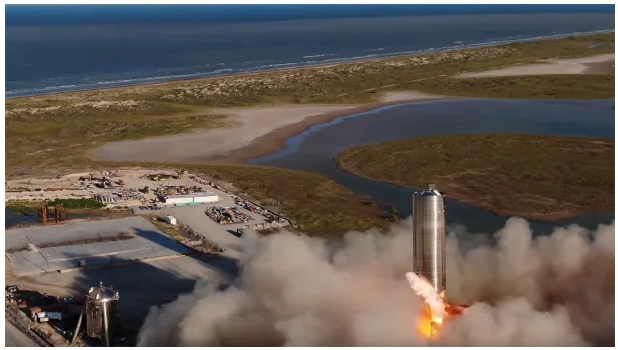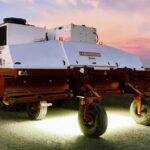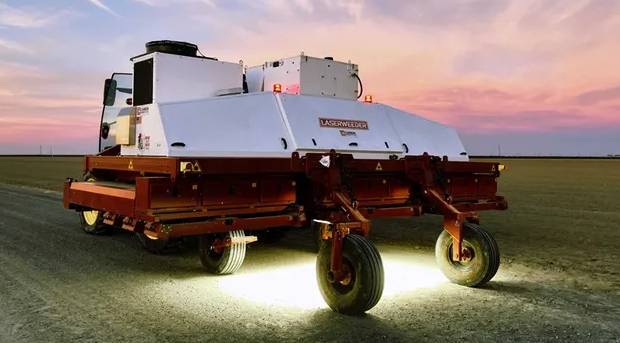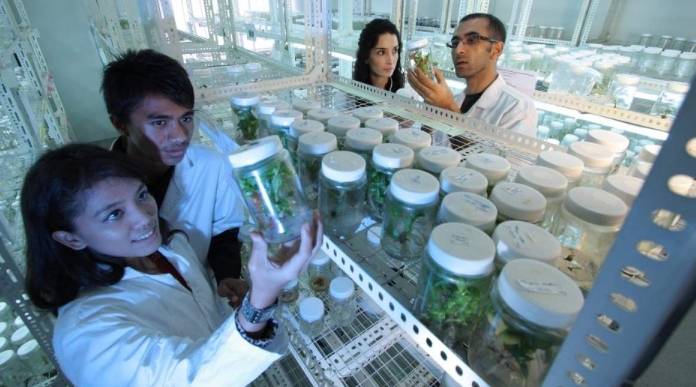
Recently, several prototypes of the planned spaceship had been destroyed, but now a test worked. An early Starship version took off and landed again.
A prototype of the Starship from SpaceX climbed 150 meters on Tuesday and then landed safely again. After a few setbacks with its predecessors, this is an important success for the US space company from Elon Musk on the – still long – road to the planned giant rocket for interplanetary missions.
A video of the test flight shows the structure, which is several dozen meters high, rising on an engine at a height of 150 meters while it is moving sideways. Then it lands again and, according to observers, still looks intact.
Success after a few setbacks
Musk had only introduced the first prototype of the starship in September 2019 and announced a spaceship that should be reusable very quickly and could fly up to three times a day or 1,000 times a year. One of these spaceships is said to be able to carry 150 tons of cargo into space and bring 50 tons of cargo back to Earth. Back then, the billionaire described the Starship as “the fastest way to a self-sustaining city on Mars” and also believed that trips to other planets such as Saturn were possible. He is already targeting the first flights with people on board for 2020, but that should not happen anymore.
SpaceX started development with the first test vehicle, Starhopper, which had already reached 150 meters in altitude when it started in August 2019 and was then retired. At the two SpaceX locations in Florida and Texas, four successors were created in parallel under the abbreviations Mk1, Mk2, Mk3 and Mk4. Mk1 was destroyed in November 2019, work on Mk2 and Mk4 was abandoned. Mk3, however, was renamed SN1 and officially the first prototype of the starship. This prototype was then destroyed in early March before SN2 passed an important test and was also retired. SN3 and SN4 were then also destroyed, SN5 now took off.
The prototype, now flown briefly, is still a long way from the final design. So it was only powered by a Raptor engine, while the Starship should use a total of six of them. Instead, it is not much more than a casing that is attached to the engine – of course the Starship should no longer look like a wheat silo later on. On Twitter, Musk explained that such jumps were planned for the next test flights before significantly higher flights were tackled. At the end of the development, the technology for colonizing Mars would be, he says optimistically. Only a few days ago, SpaceX had brought the two astronauts back to Earth who were the first to reach the ISS with a private company spacecraft.

 Exploring the Enigma of ‘Blue Zones’: Global Hotspots for Longevity
Exploring the Enigma of ‘Blue Zones’: Global Hotspots for Longevity  Ethical Considerations in the Development of Future AI Assistants: Insights from Researchers
Ethical Considerations in the Development of Future AI Assistants: Insights from Researchers  AI Revolutionizes Agriculture: Robotics and Lasers Join Forces to Tackle Weeds Across Farmlands
AI Revolutionizes Agriculture: Robotics and Lasers Join Forces to Tackle Weeds Across Farmlands  AI Unveils Groundbreaking Antibiotic Effective Against Superbugs
AI Unveils Groundbreaking Antibiotic Effective Against Superbugs 


